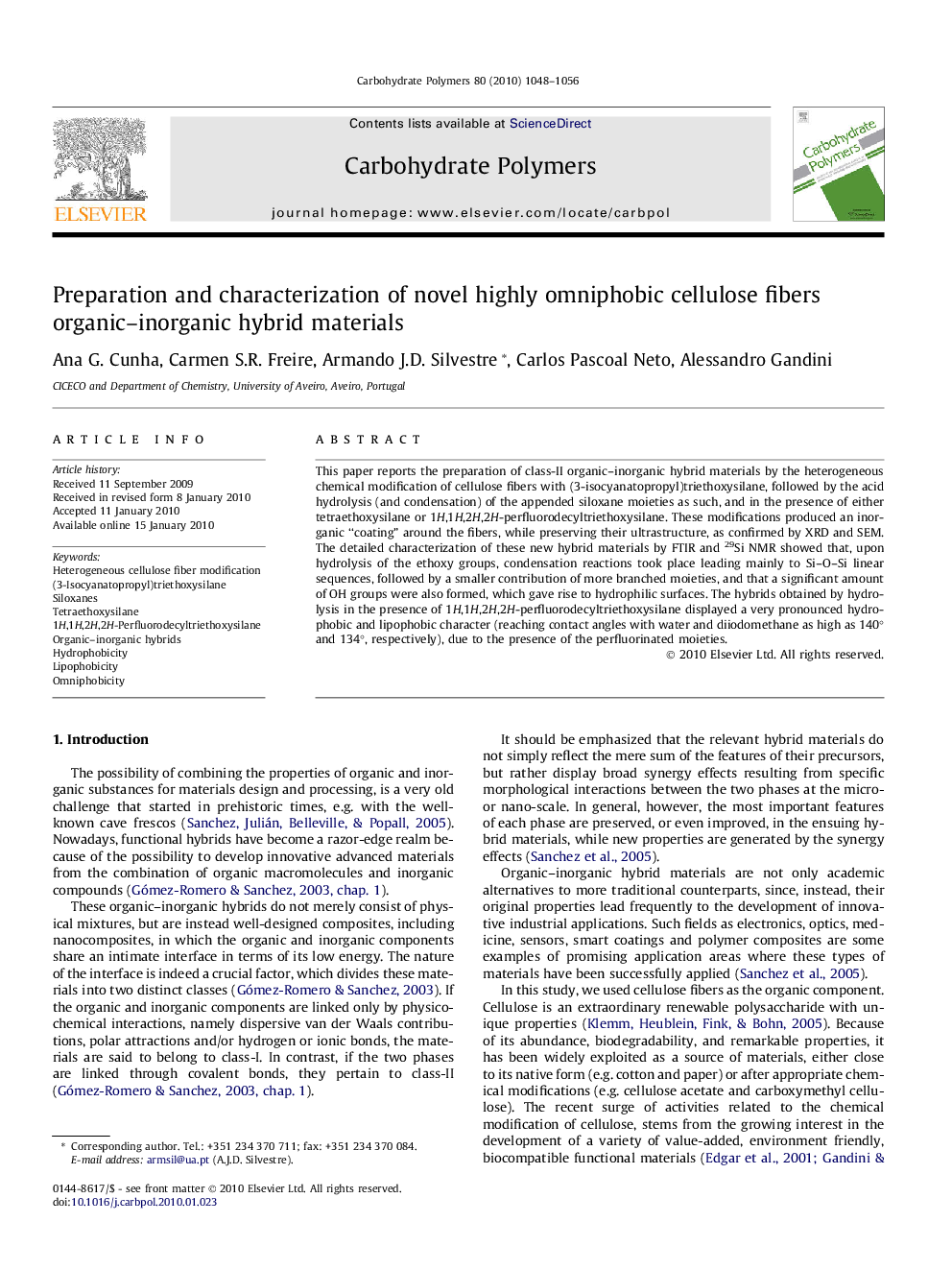| Article ID | Journal | Published Year | Pages | File Type |
|---|---|---|---|---|
| 1385736 | Carbohydrate Polymers | 2010 | 9 Pages |
This paper reports the preparation of class-II organic–inorganic hybrid materials by the heterogeneous chemical modification of cellulose fibers with (3-isocyanatopropyl)triethoxysilane, followed by the acid hydrolysis (and condensation) of the appended siloxane moieties as such, and in the presence of either tetraethoxysilane or 1H,1H,2H,2H-perfluorodecyltriethoxysilane. These modifications produced an inorganic “coating” around the fibers, while preserving their ultrastructure, as confirmed by XRD and SEM. The detailed characterization of these new hybrid materials by FTIR and 29Si NMR showed that, upon hydrolysis of the ethoxy groups, condensation reactions took place leading mainly to Si–O–Si linear sequences, followed by a smaller contribution of more branched moieties, and that a significant amount of OH groups were also formed, which gave rise to hydrophilic surfaces. The hybrids obtained by hydrolysis in the presence of 1H,1H,2H,2H-perfluorodecyltriethoxysilane displayed a very pronounced hydrophobic and lipophobic character (reaching contact angles with water and diiodomethane as high as 140° and 134°, respectively), due to the presence of the perfluorinated moieties.
